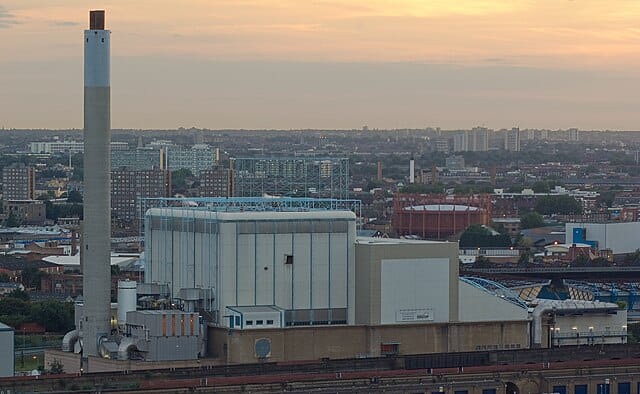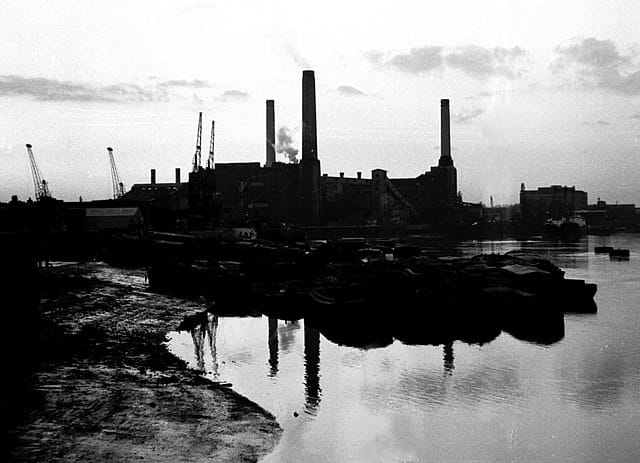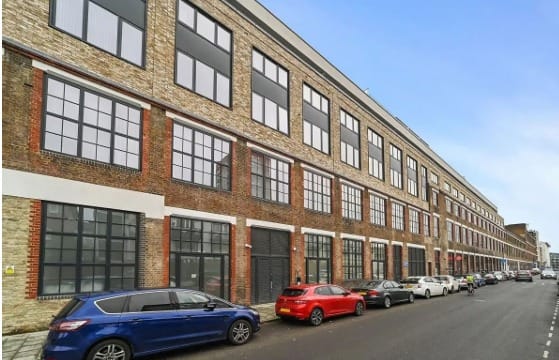Why is the UK's 8th largest incinerator sited in the heart of Deptford?
The SELCHP plant is located in a densely populated and deprived area. It burns 360,000 tonnes of household waste per year. The plant was commissioned in 1987, while campaigners fought against the rise in rubbish dumps and scrap metal yards across Deptford.

The 100 meter chimney from South East London Community Heat and Power (SELCHP) looms over Deptford, just across the road from Millwall football stadium, The Den. Flumes drift over the surrounding area, 24 hours a day, 365 days per year.
There is continual traffic to and from the site. The SELCHP plant is not only burning Lewisham’s rubbish. Lorries from Greenwich, Southwark and Westminster deliver all their black bag rubbish to the Deptford plant for incineration.
Providing this service to the four councils makes SELCHP the 8th largest incinerator of household waste across the UK.
The plant burns everything in household and council rubbish, including plastics, metals and materials treated with chemicals. This raises concerns about the many different pollutants coming from the plant, and the health impacts of the pollution on local residents.
Incinerators more likely to be sited in deprived areas
Greenpeace found that UK incinerators were three times more likely to be operating in the poorest neighbourhoods and areas with a higher proportion of people of colour, than the least.
The BBC confirmed the finding - more waste is incinerated in the most deprived areas in England.
The densely populated neighbourhood around SELCHP is in the "top" 5% of most deprived areas of the UK.
Deptford's coal-fired power station phased out in 1983
Roy Hobson grew up in Deptford, qualified as a chartered surveyor in 1984 and was an advocate for local communities in the planning debates of the 1980s and 1990s.
"As I grew up, all around us were bomb sites," Hobson says. "As the old demolition was being removed, we were used as a rubbish dump for the rest of southeast London .. Adding to that, we had a redundant power station."

The coal-fired Deptford power station, that had dominated the area since 1888, was finally decommissioned in 1983. Hobson describes scrap metal yards moving in on the vacated site, and a criminal network developing.
The local authority planned to use the brownfield site for a "light industrial solution". But Hobson had a vision of reversing the decline of the area and was a passionate supporter of building good quality local housing instead.
He campaigned alongside other local activists and took part in Deptford City Challenge, launched in 1992. City Challenge was a new approach to urban regeneration, which aimed to give a central role to local government and local communities.
SELCHP plant opens on Landmann Way in 1993
Lewisham, Southwark and Greenwich councils commissioned the SELCHP waste incinerator in 1988 as an alternative to landfill, which was becoming more expensive and harder to find.
The site around the old Deptford power plant was under campaigners' scrutiny, and they had successfully pushed back plans for a new rubbish dump on the waterfront. The Laban centre, Creekside was built there instead.
SELCHP’s developers moved west, siting their new incinerator in an intensively populated area, and at the time, avoiding public debate.
The plant opened in 1993 and since then has expanded.
30 years later, the science of air pollution and public health has advanced rapidly. Our understanding of the harms caused by the air pollution from incinerator flumes has been transformed.
Meanwhile, greenhouse gas emissions have continued to rise, causing global heating. There is increased awareness of the need to transition to clean, renewable power - wind and solar.
"UK's dirtiest form of power"
The SELCHP plant generates electricity from burning waste, which its operator - French waste management giant Veolia - sells to the national grid. It also generates heat, which Veolia feeds into a district heating scheme which provides heat and hot water for 2,800 homes.
SELCHP calls the plant an "Energy Recovery facility" while Lewisham council describes it generating "green energy" and "low carbon heat" from a "constantly renewable source".
These claims have been robustly challenged by a recent BBC investigation. The BBC looked at the greenhouse gas emissions from the UK's incinerators and concluded that burning waste is as bad for the planet as burning coal.
As the UK has now phased out burning coal for power, the BBC reported that waste incineration has become the UK's dirtiest form of power.
A spokesperson for Lewisham council responded to the BBC: "Although not without environmental impact, incineration is a better approach than sending
waste to landfill, as emissions from landfilling contribute more to climate change than CO2 released from incineration ..
"However, the council is committed to following scientific advice should the assessment of impacts change.”
Lewisham recycles only 20% of household waste
Waste incinerators provide an obligation for councils to provide feedstock and sometimes an incentive. The BBC found that the rise in incineration is having a damaging impact on council recycling rates.
It reported that Lewisham recycled only 20% of its waste in 2022/23 and incinerated 80% - burning a greater proportion of its waste than any other waste authority.
A Lewisham spokesperson said: "Year on year we are improving our recycling," adding that the council's own data for 2022/23 which they submitted to DEFRA, "showed Lewisham recycled 23% of waste generated in Lewisham". The council has a target of 65% recycling rate for municipal waste by 2030.
The other councils which use SELCHP also have poor recycling rates - the BBC found Westminster recycled only 21% of its waste and Greenwich 29%. Southwark managed to recycle almost 36% of waste and incinerated 46.6%.
A spokesperson for Veolia said: “The South East London Combined Heat and Power facility (SELCHP) forms an essential part of London's waste management infrastructure once the options of waste reduction, reuse and recycling have been exhausted.
“The site operates under a very stringent Environmental Permit regulated by the Environment Agency."
In Salamander News' next report we talk with an air pollution expert about the SELCHP incinerator and examine its health impacts for residents in Lewisham and neighbouring boroughs.



